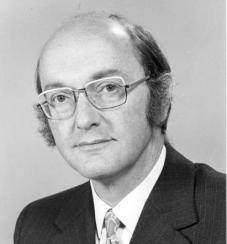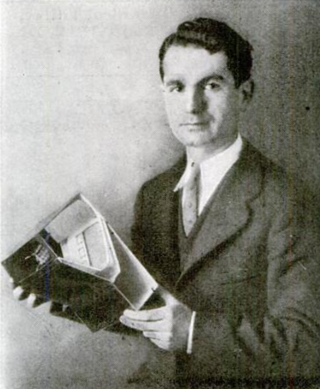Related Research Articles

Daniel Singer Bricklin is an American businessman and engineer who is the co-creator, with Bob Frankston, of VisiCalc, the first spreadsheet program. He also founded Software Garden, Inc., of which he is currently president, and Trellix, which he left in 2004. He currently serves as the chief technology officer of Alpha Software.

Robert Norton Noyce, nicknamed "the Mayor of Silicon Valley", was an American physicist and entrepreneur who co-founded Fairchild Semiconductor in 1957 and Intel Corporation in 1968. He was also credited with the realization of the first monolithic integrated circuit or microchip, which fueled the personal computer revolution and gave Silicon Valley its name.

An automated teller machine (ATM) is an electronic telecommunications device that enables customers of financial institutions to perform financial transactions, such as cash withdrawals, deposits, funds transfers, balance inquiries or account information inquiries, at any time and without the need for direct interaction with bank staff.

Texas Instruments Incorporated (TI) is an American manufacturer of calculators headquartered in Dallas, Texas. It is one of the top 10 semiconductor companies worldwide based on sales volume. The company's focus is on developing analog chips and embedded processors, which account for more than 80% of its revenue. TI also produces TI digital light processing technology and education technology products including calculators, microcontrollers, and multi-core processors.

Jack St. Clair Kilby was an American electrical engineer who took part, along with Robert Noyce of Fairchild Semiconductor, in the realization of the first integrated circuit while working at Texas Instruments (TI) in 1958. He was awarded the Nobel Prize in Physics on 10 December 2000.

Ivan Edward Sutherland is an American computer scientist and Internet pioneer, widely regarded as a pioneer of computer graphics. His early work in computer graphics as well as his teaching with David C. Evans in that subject at the University of Utah in the 1970s was pioneering in the field. Sutherland, Evans, and their students from that era developed several foundations of modern computer graphics. He received the Turing Award from the Association for Computing Machinery in 1988 for the invention of the Sketchpad, an early predecessor to the sort of graphical user interface that has become ubiquitous in personal computers. He is a member of the National Academy of Engineering, as well as the National Academy of Sciences among many other major awards. In 2012, he was awarded the Kyoto Prize in Advanced Technology for "pioneering achievements in the development of computer graphics and interactive interfaces".
Chemical Bank was a bank with headquarters in New York City from 1824 until 1996. At the end of 1995, Chemical was the third-largest bank in the U.S., with about $182.9 billion in assets and more than 39,000 employees around the world.

Ralph Henry Baer was a German-American inventor, game developer, and engineer.

William Stanley Jr. was an American physicist born in Brooklyn, New York. During his career, he obtained 129 patents covering a variety of electric devices. In 1913, he also patented an all-steel vacuum bottle, and formed the Stanley Bottle Company.

Donald Watts Davies, was a Welsh computer scientist and Internet pioneer who was employed at the UK National Physical Laboratory (NPL).

Ernst Frederick Werner Alexanderson was a Swedish-American electrical engineer, who was a pioneer in radio and television development. He invented the Alexanderson alternator, an early radio transmitter used between 1906 and the 1930s for longwave long distance radio transmission. Alexanderson also created the amplidyne, a direct current amplifier used during the Second World War for controlling anti-aircraft guns.

Robert Stanley "Bob" Barton was the chief architect of the Burroughs B5000 and other computers such as the B1700, a co-inventor of dataflow architecture, and an influential professor at the University of Utah.

George Charles Devol Jr. was an American inventor, best known for creating Unimate, the first industrial robot. The National Inventors Hall of Fame says, "Devol's patent for the first digitally operated programmable robotic arm represents the foundation of the modern robotics industry."

Luther George Simjian was an Armenian-American inventor and entrepreneur. A prolific and professional inventor, he held over 200 patents, mostly related to optics and electronics. His most significant inventions were a pioneering flight simulator, arguably the first ATM and improvement to the teleprompter.

Norman Manuel Abramson was an American engineer and computer scientist, most known for developing the ALOHAnet system for wireless computer communication.
Dr. Lawrence Jerome Fogel was a pioneer in evolutionary computation and human factors analysis. He is known as the inventor of active noise cancellation and the father of evolutionary programming. His scientific career spanned nearly six decades and included electrical engineering, aerospace engineering, communication theory, human factors research, information processing, cybernetics, biotechnology, artificial intelligence, and computer science.
DataTreasury, located in Plano, Texas, United States, develops, acquires and licenses technology for secure check image capture and storage. As of 2010 the company had 2 employees, about 1000 shareholders and had generated over $350 million in licensing revenue in the previous four years.

Francis Fan Lee was a Chinese-American inventor, businessman, and professor emeritus of Electrical Engineering and Computer Science at the Massachusetts Institute of Technology (MIT). Lee is the founder of Lexicon (company). He is best known for three inventions: the Digital Cardiac Monitor (1969), the Digital Audio Signal Processor (1971), and the Digital Time Compression System (1972). In 1984, Lexicon won an Emmy Award for Engineering Excellence for the Model 1200 Audio Time Compressor and Expander, widely used in the television industry.

James L. Buie was an American scientist and inventor working for TRW Inc who developed transistor–transistor logic, a form of integrated circuit technology that became widely used early in the integrated circuit industry.
Edward "Gordon" Perry Jr. was an American inventor and businessman who served as chief research engineer for Texas Instruments. He was also a co-founder of Recognition Equipment, Inc, (REI). He is best known for inventing the first commercially viable Retina Character Reader.
References
- ↑ U.S. patent 3,761,682
- ↑ "Interview with Mr. Don Wetzel". americanhistory.si.edu. Retrieved 2020-11-25.
- ↑ McKay, Hollie (2019-08-30). "90-year-old inventor of the ATM celebrates its 50th birthday, admits wife has never used one". Fox News. Retrieved 2020-11-25.
- ↑ biography from IEEE